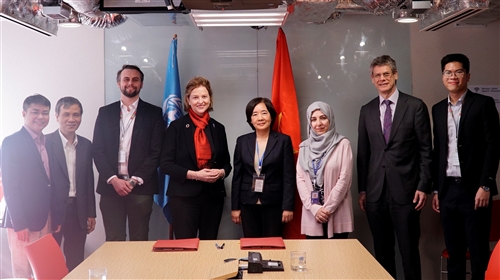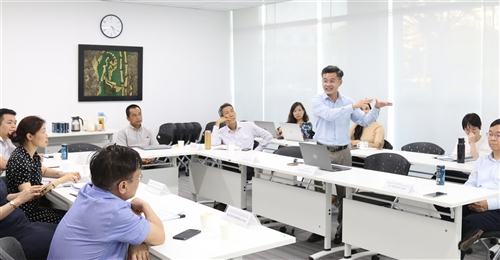Once a success legend after Reform movement in Vietnam and first choice of investors, the South region in general and HCMC have been running out of steam compared to other localities in the race of economic development. Many favorable conditions of the region have eroded over time and exposed different growth bottlenecks, including degraded infrastructure, stranded urban transport system, environment pollution and weak links with surrounding growth centers.
On the 8th of March, a group of researchers from Central Institute of Economic Management (CIEM) led by Dr. Nguyen Dinh Cung (former Head of CIEM) visited and had an insightful discussion with Fulbright faculty members on the topic “Promoting regional links for economic development in the South region: challenges and solutions”.
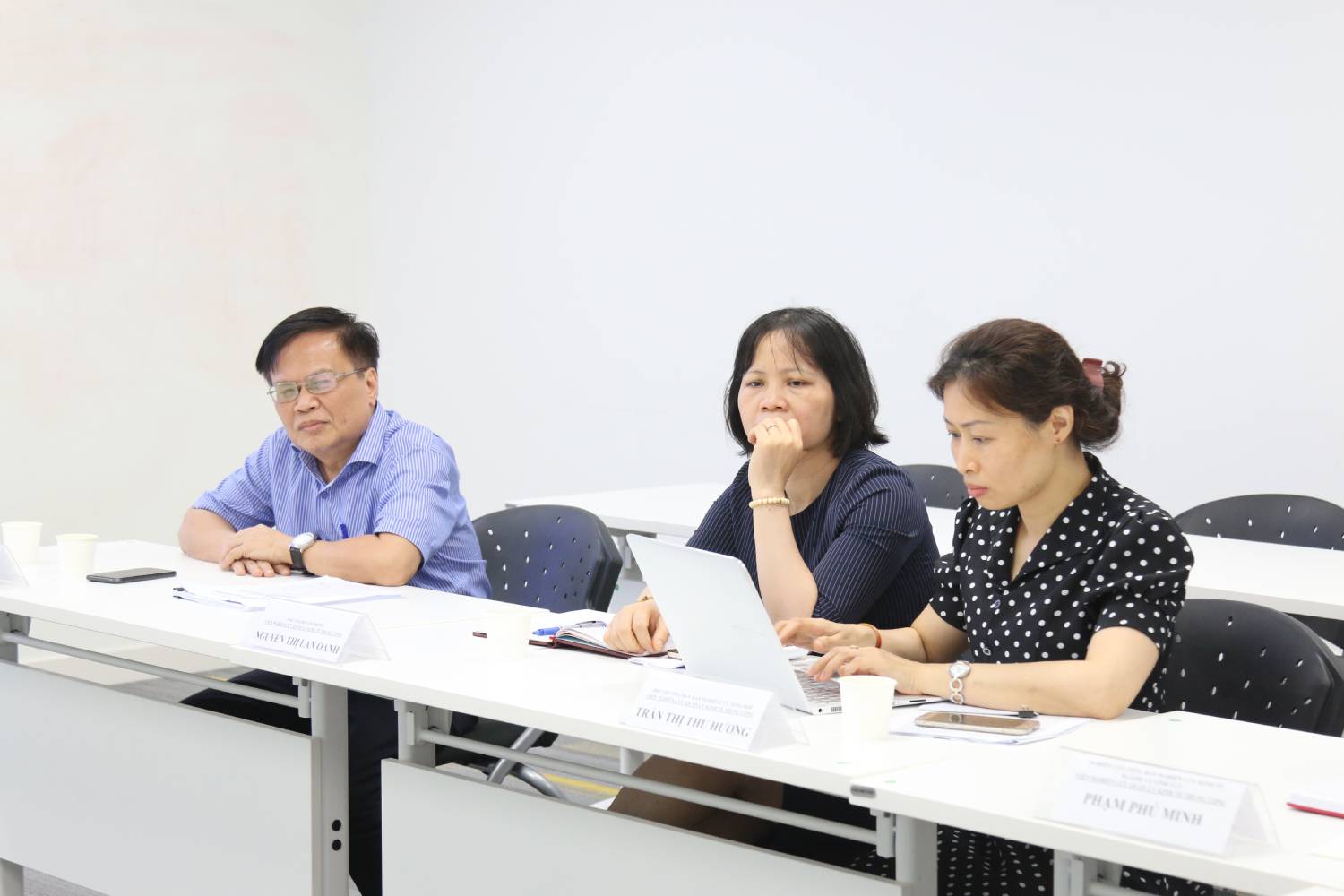
Anomalies from budget allocation
Southern Key Economic Zone (including 8 cities and provinces in the South east and Mekong delta) only accounts 20% of national population but contributes 45% of GDP; its budget revenue accounts for 40% but budget expenditure is only 20%. At closer look, HCMC is considered the “growth engine” of the whole region, accounting for 42% of total population, 56% of social investments, and contributed 51% GDP to the whole region.
Budget retention rate of Southern provinces are significantly lower than their peers in the North; for example, industrial zones around HCMC like Binh Duong and Dong Nai provinces which are comparable in economic scale to industrial provinces in approximation with Hanoi are allowed to keep 36% and 47% of their budget, respectively. In contrast, their Northern peers – Vinh Phúc, Bac Ninh and Hai Duong – can retain 53%, 83% and 98% of budget revenue for their own use. For HCMC, despite their significant contributions to government revenue, permitted retention ratio is among the lowest in the country at depressingly low level of 18%.

As an effect of anomalies in budget allocation, the South region and HCMC are losing traction, lacking resources for investment to upgrade its intra and inter-region transport network. Gateways connecting HCMC to surrounding manufacturing centers towards the East and West directions are gridlocked due to traffic congestion. This pushes upward pressure on production costs, service fees, and export goods, undermining competitiveness of the region and making it less attractive to investors.
This effect is evident from analysis of FDI statistics drawn to HCMC in recent periods. Once dubbed “the investor magnet” of the South, FDI projects in HCMC are gradually diminishing in scale and scope. The value of typical FDI projects in the South region is estimated to be around USD10 million, lower than national figure of USD12.42 million; and this figure is much lower for HCMC when average FDI project in the city is only worth USD5.56 million. Failure to attract mega-sized foreign investment projects prevents the city from absorbing modern knowledge in corporate governance and production technologies to lead next wave of growth.

Detached regional links
The second impediment to growth identified by Fulbright and CIEM experts is the shaky link between HCMC and the South industrial hub. The city fails to take advantage of its connection with surrounding manufacturing hubs as leverage for its own and regional growth. Despite geographical closeness to two biggest industrial centers in the South, i.e., Binh Duong and Dong Nai provinces, supporting industries in HCMC cannot meet the demands of these two burgeoning hubs. Real estate is ranked first in the service sector of the city while logistics (a supporting service for manufacturing) ranks at the 5th position.

Besides, challenges facing Southeast region and Mekong delta calls for concerted effort across industries and localities. The challenge of the Southeast region is how to develop the economy in sustainable manners, i.e., growing fast in parallel with creating a greener and cleaner living environment. Given their proximity, industrial activities in Binh Duong or Dong Nai are much likely to impact the water and air quality of HCMC residents. It has been reported that industrial wastage in upstream canals in Binh Duong pollute downstream water in HCMC. As for Mekong delta, climate change, salinity intrusion, abuse of natural resources requires coordinated effort of local leaders.
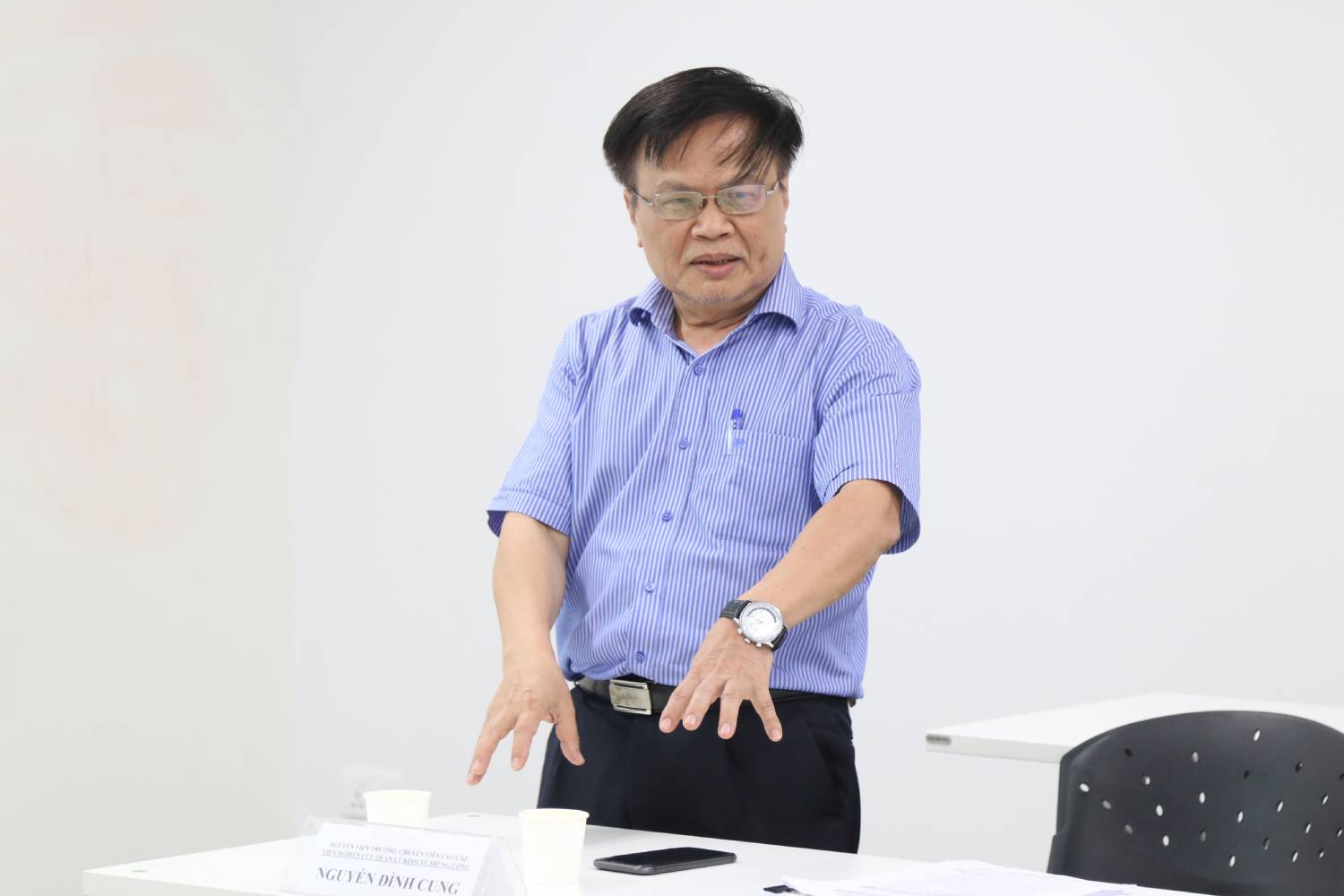
From these observations, economic experts in both institutes recommend that there should be a master development plan for the region, serving as a referenced framework for each locality in their decision-making. On the other hand, local leaders are encouraged to adopt a regional outlook in development to advocate more effective cooperative mechanisms and create seamless road, sea, and air transportation systems as well as shared data centers for regional use.
In wrap up, Dr. Nguyen Dinh Cung commended constructive and evidence-based policy critique of Fulbright faculty, suggesting further cooperation opportunities of the two institutes in future research projects examining HCMC development and the South region as well as national economy in general.
- Quỳnh Chi
Related Articles

Fulbright Faculty Engage in “Dialogue 2045” with Prime Minister on Vietnam Outlook
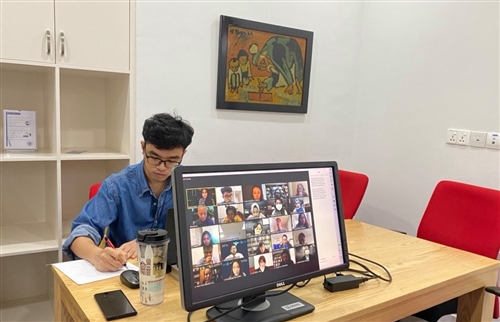
Fulbright student wins third place in NASPAA’s global policy simulation competition
